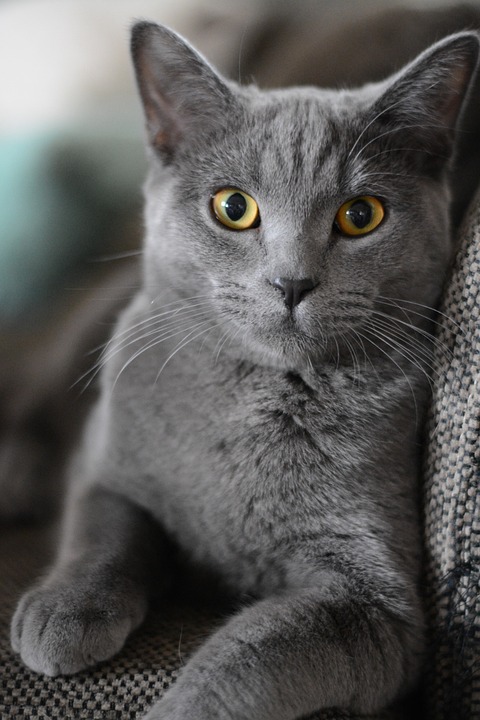Cats are known for their unique and intriguing behaviors, and one such behavior that often puzzles cat owners is tail quivering. Tail quivering in cats is a fascinating phenomenon that can occur during moments of heightened emotions. In this article, we will delve into the reasons behind this behavior and provide valuable tips on how to address it. So, if you’ve ever wondered why your cat’s tail quivers and how to handle it, keep on reading!
What Causes Tail Quivering During Heightened Emotions?
Cats have a complex language of their own, and their tails play a crucial role in expressing their emotions. While cats typically communicate through body language, vocalizations, and facial expressions, tail movements serve as an additional means of communication. Tail quivering is one such tail movement that can occur during various heightened emotional states.
1. Excitement or Anticipation: Tail quivering can occur when a cat is excited or anticipating something. It often happens during playtime, when your feline friend is eagerly waiting for you to throw a toy or engage in interactive play. The quivering tail indicates their excitement and readiness to pounce.
2. Fear or Anxiety: Cats also exhibit tail quivering in response to fear or anxiety-inducing situations. When a cat feels threatened or frightened, their tail may quiver along with other fear-related behaviors. It serves as a warning sign that your cat is feeling uneasy and may need reassurance or a safe space.
3. Agitation or Aggression: In some cases, tail quivering can be a sign of agitation or aggression. When a cat’s tail is puffed up and quivering, it usually indicates that they are feeling threatened, defensive, or ready to attack. It’s crucial to recognize these signs and respond appropriately to avoid any aggressive encounters.
Addressing Tail Quivering Behavior in Cats
If your cat’s tail quivering behavior becomes concerning or disruptive, there are several steps you can take to address it effectively. Remember, understanding the underlying cause is key to finding the most suitable solution.
1. Create a Calming Environment: Ensure your cat has a safe and calm environment where they can retreat to when they feel anxious or overwhelmed. Provide hiding spots, elevated perches, and a comfortable resting area to help your cat feel secure.
2. Identify Triggers: Observe your cat’s behavior closely to identify any potential triggers for tail quivering. It could be the presence of unfamiliar people or animals, loud noises, or changes in routine. By recognizing these triggers, you can work on minimizing their impact or gradually desensitizing your cat to them.
3. Positive Reinforcement: Use positive reinforcement techniques to help your cat associate positive experiences with situations that typically trigger tail quivering. Reward them with treats, praise, or playtime when they remain calm or show reduced signs of anxiety during these situations.
4. Consult a Veterinarian: If your cat’s tail quivering behavior persists or escalates despite your efforts, it’s advisable to consult a veterinarian. They can rule out any underlying medical conditions that may be contributing to the behavior and provide further guidance or recommend a behaviorist if necessary.
FAQs About Tail Quivering Behavior in Cats
1. Is tail quivering a normal behavior in cats?
– Yes, tail quivering can be a normal behavior in cats, especially during moments of heightened emotions. However, it’s essential to monitor the context and intensity of the quivering to ensure it is not a sign of distress or aggression.
2. How can I differentiate between fear-based and excitement-based tail quivering?
– Fear-based tail quivering often accompanies other fear-related behaviors such as flattened ears, dilated pupils, and a crouched body posture. Excitement-based tail quivering, on the other hand, is usually accompanied by a playful or alert body posture, twitching whiskers, and dilated eyes.
3. Can I train my cat to control tail quivering behavior?
– While you cannot completely train your cat to control tail quivering, you can help them manage their emotions better through positive reinforcement and creating a calming environment. Remember that tail quivering is a natural form of communication for cats.
4. When should I seek professional help for my cat’s tail quivering behavior?
– If your cat’s tail quivering is accompanied by aggressive behavior, excessive stress, or becomes disruptive to their daily routine, it’s advisable to seek professional help from a veterinarian or a certified animal behaviorist.
Understanding and addressing tail quivering behavior in cats during heightened emotions can help strengthen the bond between you and your feline companion. By providing a supportive environment and identifying triggers, you can help your cat feel more secure and reduce their anxiety levels. Remember, patience, positive reinforcement, and seeking professional guidance when needed are essential in ensuring your cat’s emotional well-being.








